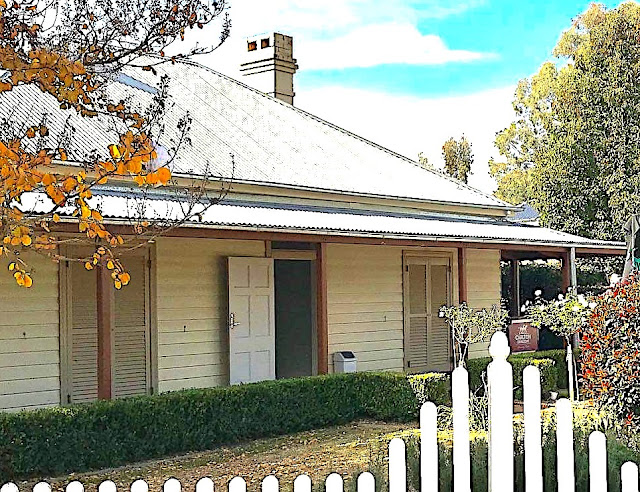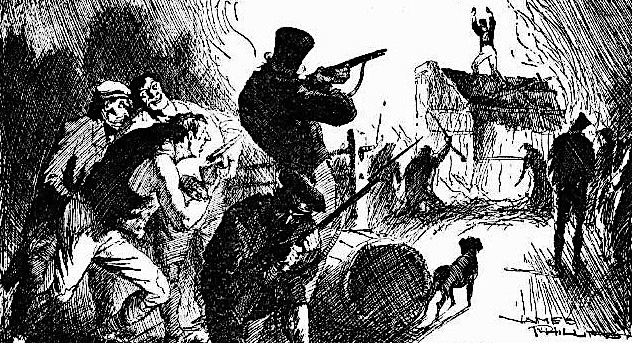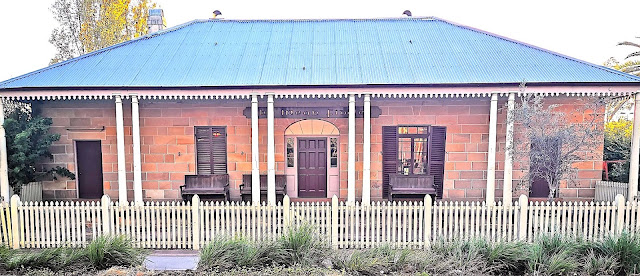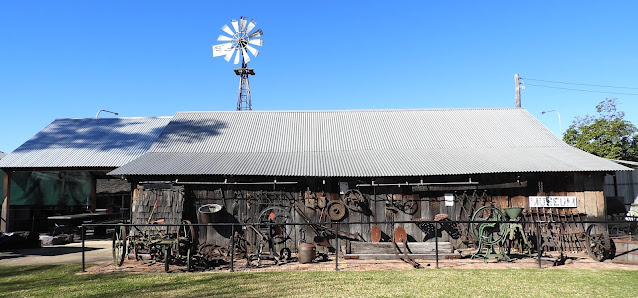 |
| Rouse Hill House, NSW, built from 1813–1818 |
Rouse Hill area was on the lands of the Darug people.
Rouse Hill is a suburb of Sydney.
Rouse Hill House and farm, was the family home of Richard Rouse, the Colonial Superintendent of Public Works and Convicts at Parramatta.
The New South Wales Governor Philip Gidley King declared martial law and Major George Johnston of the New South Wales Corps along with troops and civilian volunteers tried to get the rebels to surrender.
Built from 1813, in Australian Georgian style, the Rouse Hill homestead is now managed by Sydney Living Museums as a museum that is open to the public.
Richard Rouse arrived in the colony in 1801 and was given a grant of 450 acres, at an area known as Vinegar Hill.
Vinegar Hill was named after a place in County Wexford, Ireland, where Irish and English forces clashed in 1798.
This first rebellion in Australian history occurred on 4 March 1804 in Rouse Hill. The battle was between escaped Irish convicts who wanted to overthrow British rule in New South Wales and return to Ireland.
This first rebellion in Australian history occurred on 4 March 1804 in Rouse Hill. The battle was between escaped Irish convicts who wanted to overthrow British rule in New South Wales and return to Ireland.
The Irishmen responded with "death or liberty, and a ship to take us home".
Government forces fired on the convicts, killing 15. The remaining convicts ran into the bush, where the troops pursued them, killing about 15 more. Most of the convicts surrendered or were recaptured.
The area became known as Vinegar Hill.
In 1805, New Windsor Road was built as an extension from Baulkham Hills to Windsor. The Hawkesbury Road then became known as "Old Windsor Road".
In 1810, James Harper began to build a public turnpike road from Cheer's Corner in Town of Sydney to the toll bridge at Hawkesbury. Toll gates were added at Windsor, Rouse Hill and Parramatta.
Mungerie house is situated on land that was granted to Edward Robinson on 18 October 1809. When Robinson died in 1820, his 15 year old son, Edward, inherited the property. A survey map from 1827 does not show the house on the property. It is believed that the house may have been built between 1866 and 1895.
Around Rouse Hill House and Farm
Places To Go
In 1810, James Harper began to build a public turnpike road from Cheer's Corner in Town of Sydney to the toll bridge at Hawkesbury. Toll gates were added at Windsor, Rouse Hill and Parramatta.
Governor Macquarie changed the name of the locality to Rouse Hill.
When a daily mail coach service began between Windsor and Sydney in 1831, horses were changed at the Rouse Hill Hotel. The publican at the time, John Booth, was known as "Crockery Bill".Rouse died in 1852 and left the property to his son Edwin Rouse. Edwin's son Edwin Stephen Rouse, inherited the property when he died in 1862. In fact, six generations of this family have lived at Rouse Hill house and farm.
Also part of the surrounding estate are the restored 1888 schoolhouse and the site of the 1804 "Vinegar Hill" convict rebellion.
 |
| Rouse family and others, Rouse Hill House, NSW, 1859, SLNSW |
Visit the estate and see memorabilia, artefacts, furnishings, buildings and gardens the Rouse family.
Also at Rouse Hill
The Royal Oak
The Royal Oak, a heritage-listed hotel on Windsor Road in Rouse Hill, was built 1826 -29. The hotel has been known as the Mean Fiddler Hotel, White Hart Inn and Queens Arms Inn.Aberdoon House
Aberdoon House, located in Clower Avenue, Rouse Hill, is an intact example of an old Colonial Georgian Cottage.
The Hunting Lodge
The land was granted to former convict Thomas Clower on 13 January 1818.
Hugh Kelly, who later owned the property, was a well known early settler and landowner whose name is remembered in the township of Kellyville.
Kelly bought the property in 1826. He also owned the nearby "Bird in the Hand" tavern, a heritage-listed inn at 87 Eldon Street, Pitt Town.
Kelly named the farm "Vinegar Hill Farm".
Later, after 1841, Vinegar Hill Farm was sold to brothers William and Dr. Alexander Gamack, who subdivided the land, and called it Aberdour, after the village of their birth near Edinburgh, Scotland.
The date 1887, which appears above the lintel of the front door, is believed to be the date of a major renovation and not the original date of construction.The Hunting Lodge
 |
| The Hunting Lodge at 58 The Water Lane in Rouse Hill, NSW, is on land granted by Governor King to Governor Bligh in 1806. |
The Hunting Lodge at 58 The Water Lane in Rouse Hill is on land granted by Governor King to Governor Bligh in 1806. The building may have been constructed by Governor Bligh or the Terry family of Box Hill. Or one of their tenants who was a stonemason.
Mungerie House
 |
| Mungerie house is situated on land that was granted to Edward Robinson on 18 October 1809. 16 Bellcast Rd, Rouse Hill NSW |
Around Rouse Hill House and Farm
 |
| Rouse Hill House, NSW, built from 1813–1818 |
 |
| Rouse Hill House and farm, NSW |
 |
| The stables at the Rouse Hill property, built around 1876, NSW |
 |
| Rouse Hill House and farm, NSW |
 |
| The dining room at Rouse Hill House and farm, NSW |
Places To Go
The Fiddler Rouse Hill Royal Oak Inn (former)
Mungerie House (now a cafe/Restaurant)












































